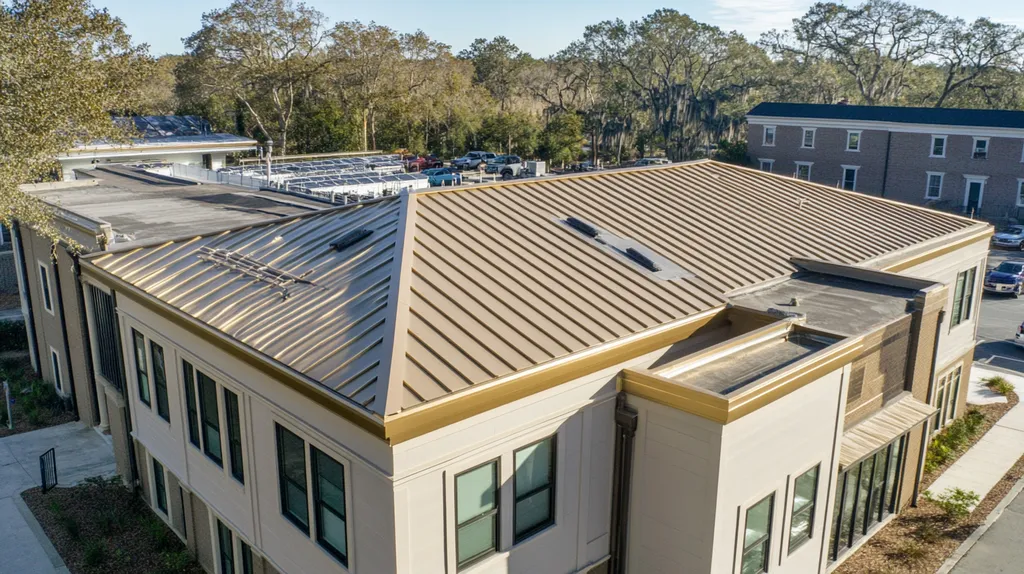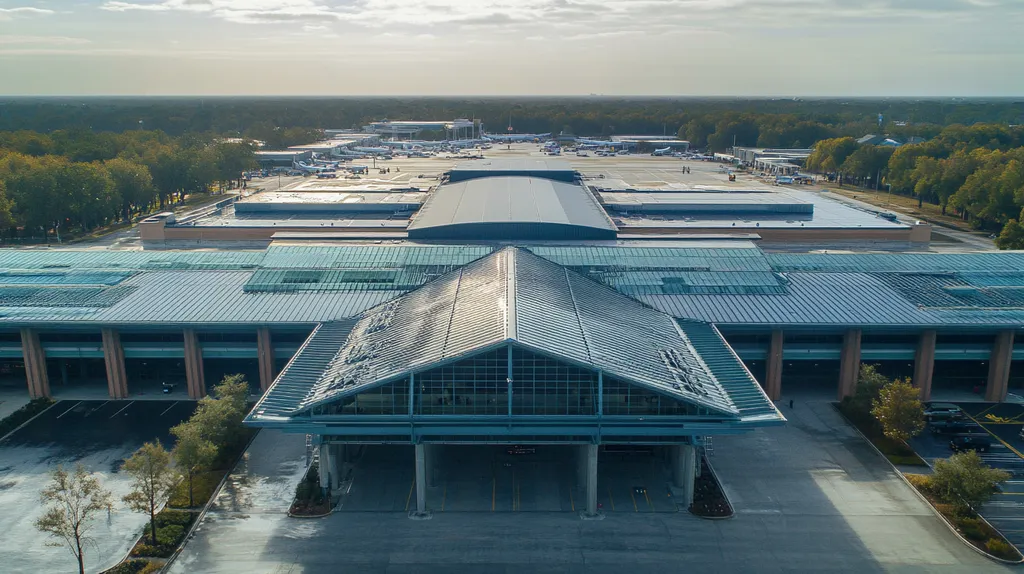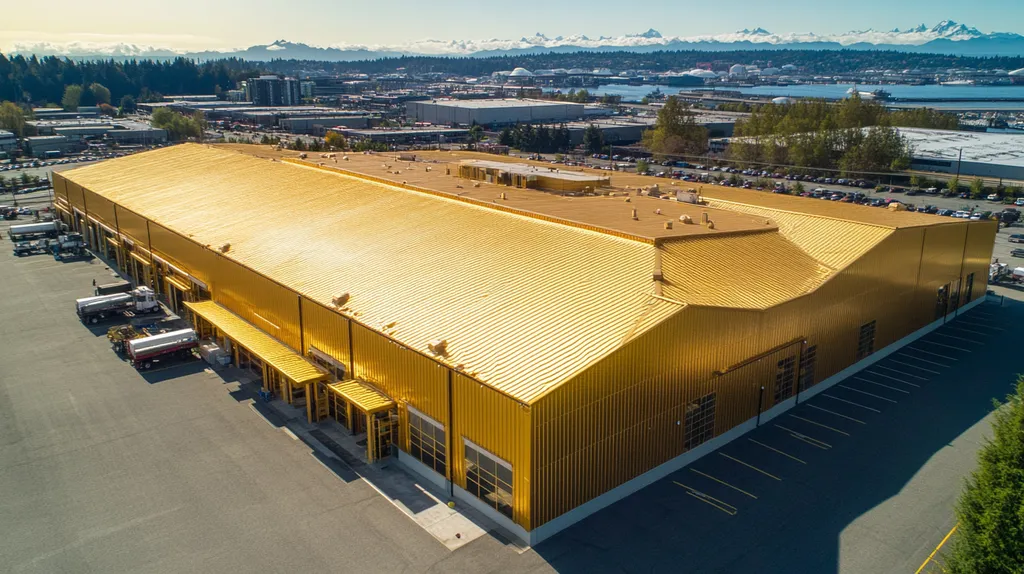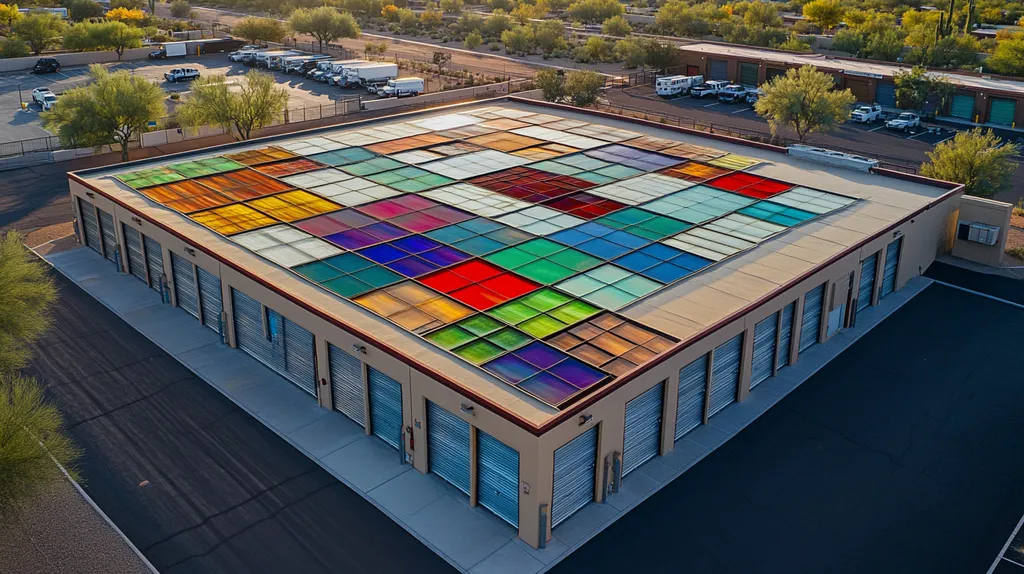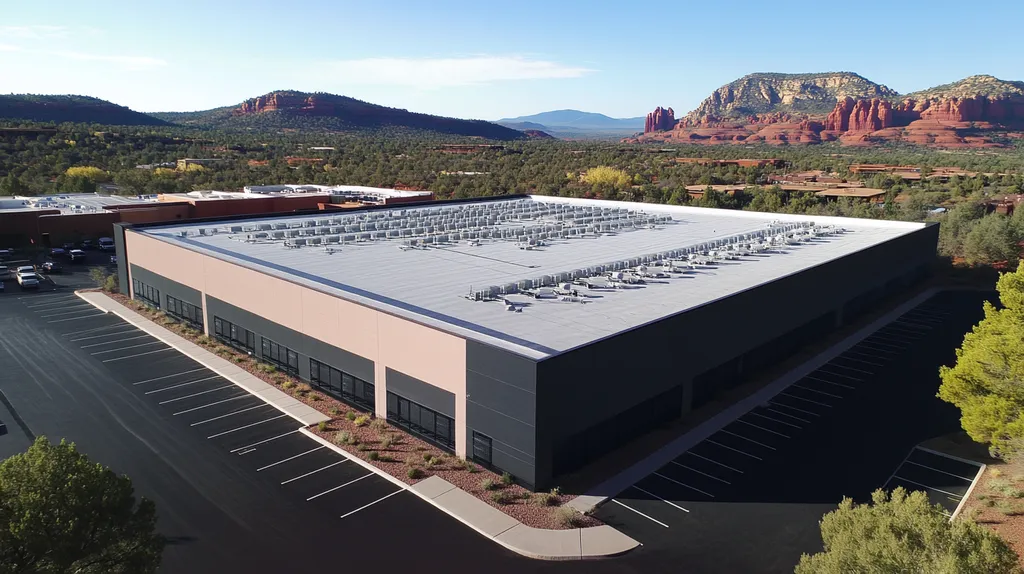Every year, commercial roof failures cost businesses over $2.5 billion in damages, with 40% of incidents occurring during emergency weather events when facilities lack proper response protocols.
For property owners and facility managers, the difference between minor damage and catastrophic failure often comes down to having comprehensive emergency response plans in place.
This manual provides a systematic approach to developing, implementing, and optimizing roof protection strategies that safeguard commercial properties through detailed protocols, team coordination procedures, and advanced monitoring systems.
SECTION 1: FUNDAMENTAL CONCEPTS
Every year, commercial roofing emergencies cost businesses billions in damage, lost productivity, and repairs. Studies show that up to 40% of these incidents could have been prevented or minimized through proper emergency planning. Understanding the fundamentals of roof protection isn’t just about maintenance—it’s about safeguarding your facility’s operations, protecting valuable assets, and ensuring business continuity when unexpected roofing issues arise.
Understanding Roofing Emergencies
A roofing emergency occurs when immediate action is required to prevent or stop damage to the building’s structure, contents, or occupants. These situations often develop rapidly, transforming minor issues into major crises within hours or even minutes.
Common emergency triggers include sudden water infiltration, structural compromise from severe weather, and damage from falling debris or equipment impacts. Each of these scenarios requires distinct response protocols and safety considerations.
The scope of a roofing emergency extends beyond visible damage. Hidden problems like saturated insulation or compromised deck integrity can pose serious risks to both the building and its occupants.
Response timing is critical during roofing emergencies. What begins as a small leak can quickly escalate into extensive damage, affecting everything from electrical systems to inventory storage.
Benefits of Emergency Planning
A comprehensive emergency response plan serves as a facility’s roadmap during crisis situations. It eliminates guesswork, reduces response time, and ensures consistent action across all shifts and personnel.
Financial benefits of emergency planning include reduced repair costs, lower insurance premiums, and minimized business interruption losses. Organizations with established plans typically see 60% lower damage-related expenses compared to unprepared facilities.
Emergency plans also enhance workplace safety by establishing clear protocols for emergency response teams. Proper covers and safety systems must support at least twice the weight of workers and equipment during emergency repairs. (source: OSHA)
These plans facilitate better coordination with insurance providers, contractors, and emergency services, streamlining the response process and documentation requirements.
Common Risk Factors
Age and maintenance history significantly impact a roof’s vulnerability to emergencies. Systems approaching the end of their service life show increased susceptibility to sudden failures, particularly during extreme weather events.
Geographic location plays a crucial role in risk assessment. Coastal areas face different challenges than inland facilities, while northern regions must account for snow loads and freeze-thaw cycles.
Building use and occupancy patterns affect risk levels. Manufacturing facilities with roof-mounted equipment face different challenges than warehouse structures, requiring specialized emergency response protocols.
Design elements such as penetrations, equipment curbs, and drainage systems create potential failure points. Regular inspection and maintenance of these components is essential for preventing emergency situations.
SECTION 2: SYSTEM COMPONENTS
Commercial roofing emergencies can escalate from minor issues to catastrophic failures within hours. Recent industry data shows that facilities with structured emergency response systems reduce damage costs by up to 65% compared to those without proper protocols. Building a robust emergency response framework requires three critical elements: clear protocols, dedicated response teams, and reliable contractor partnerships.
Essential Response Protocols
Emergency protocols form the foundation of effective roof protection. These documented procedures must outline specific steps for various emergency scenarios, from severe weather events to sudden leaks.
Clear communication chains are essential during crisis situations. Protocols should establish who needs to be notified, in what order, and through which channels.
Employers must develop detailed emergency action plans that include procedures for reporting emergencies, evacuation protocols, and designated safety coordinators. (source: OSHA)
Response protocols should also include detailed documentation requirements. This ensures proper tracking of incidents and supports insurance claims while identifying patterns that may prevent future emergencies.
Designated Response Teams
Response teams require clear organizational structures with defined roles and responsibilities. Each team member must understand their specific duties during different types of roofing emergencies.
These teams should include facility personnel who can perform immediate assessment and temporary protective measures. Having trained staff available across all shifts ensures continuous emergency response capability.
Regular training sessions keep response teams sharp and prepared. Monthly reviews of emergency procedures and quarterly practical exercises maintain readiness levels.
Team members must also maintain current knowledge of the building’s roofing systems and safety equipment locations. This familiarity reduces response times during critical situations.
Trusted Roofing Partnerships
Professional roofing contractors play a vital role in emergency preparedness and response. These partnerships should be established well before emergencies occur, with clear service level agreements and response time guarantees.
Contractors should provide detailed documentation of their emergency response capabilities. This includes equipment resources, crew availability, and backup systems for after-hours emergencies.
Regular preventive maintenance visits by trusted contractors help identify potential issues before they become emergencies. These inspections create familiarity with the facility’s specific roofing systems.
Effective partnerships also include ongoing communication about roof condition, upcoming weather events, and potential vulnerabilities. This proactive approach strengthens overall emergency preparedness.
SECTION 3: IMPLEMENTATION METHODS
Effective implementation of roofing emergency response plans can mean the difference between minor repairs and catastrophic failure. Studies show that facilities with well-executed plans reduce emergency repair costs by up to 70% compared to those without structured protocols. The challenge lies in translating plans into actionable systems that protect both facilities and occupants while maintaining regulatory compliance.
Developing Emergency Action Plans
A comprehensive Emergency Action Plan (EAP) serves as the foundation for effective roof protection. It must detail specific response protocols for various scenarios, from severe weather events to structural failures, with clear triggers for escalation.
The plan should establish a clear chain of command and communication protocols. This includes designated response coordinators, contact information for key personnel, and procedures for after-hours emergencies.
Documentation requirements must be clearly outlined in the EAP. This includes incident reporting forms, damage assessment checklists, and procedures for capturing photographic evidence of emergency conditions.
Regular review and updates of the EAP ensure its continued effectiveness. Annual assessments should incorporate lessons learned from previous incidents and adapt to changes in facility operations or environmental conditions.
Conducting Regular Roof Inspections
Systematic inspection programs form the backbone of preventive emergency management. Professional evaluations should occur bi-annually at minimum, with additional inspections following severe weather events or reported issues.
Inspection protocols must address all roofing components, including membrane condition, flashings, drainage systems, and penetrations. Particular attention should focus on high-risk areas such as corners, transitions, and equipment mounting points.
Modern inspection techniques incorporate digital documentation and imaging technologies. These tools create detailed records of roof conditions and help track deterioration patterns over time.
Employers must ensure that safety systems and covers protecting workers during inspections can support at least twice the weight of workers and their equipment. (source: OSHA)
Coordinating with Contractors
Successful emergency response relies on established partnerships with qualified roofing contractors. Service agreements should specify response times, emergency procedures, and communication protocols for various emergency scenarios.
Contractor qualifications must be verified and regularly updated. This includes checking licenses, insurance coverage, safety records, and emergency response capabilities.
Regular coordination meetings help maintain alignment between facility needs and contractor capabilities. These sessions should review recent incidents, discuss upcoming maintenance, and update emergency contact information.
Establishing material and equipment stockpiles with trusted contractors can significantly reduce emergency response times. This includes arrangements for temporary repairs and weather protection systems.
SECTION 4: MAINTENANCE REQUIREMENTS
Strategic maintenance of commercial roofing systems represents the cornerstone of effective facility protection. Industry data reveals that preventive maintenance programs can extend roof life by up to 300% while reducing annual repair costs by 50%. However, less than 30% of commercial properties maintain comprehensive roofing programs, leading to premature system failures and unnecessary capital expenditures. Understanding and implementing proper maintenance requirements protects both the physical asset and the bottom line.
Preventative Maintenance Strategies
Effective preventative maintenance begins with a systematic approach to roof care. Regular debris removal, drainage system cleaning, and membrane inspection form the foundation of basic maintenance protocols.
Seasonal changes demand specific maintenance responses. Spring preparations should focus on repairing winter damage, while fall maintenance emphasizes drainage clearing and membrane reinforcement before severe weather arrives.
Strategic coating applications and membrane reinforcement can significantly extend system longevity. These protective measures should align with manufacturer specifications and local climate conditions.
All maintenance activities must incorporate proper safety protocols. Employers must establish comprehensive safety monitoring systems when workers perform maintenance on roofs, ensuring protection from falls and other hazards. (source: OSHA)
Regular Inspection Schedules
Comprehensive inspection programs require structured scheduling based on roof type, age, and environmental conditions. Most commercial roofs need detailed professional inspections at least twice annually.
Core inspection points include membrane condition, flashing integrity, drainage functionality, and penetration seals. Special attention must focus on high-stress areas like corners, transitions, and equipment mounts.
Post-storm inspections become critical for maintaining system integrity. These evaluations should occur within 48 hours of significant weather events to identify and address potential damage.
Modern inspection protocols increasingly incorporate infrared scanning and moisture mapping. These technologies provide early detection of subsurface issues before visible damage occurs.
Documentation for Compliance
Proper documentation serves multiple purposes beyond basic record-keeping. Detailed maintenance logs support warranty compliance, insurance claims, and capital planning decisions.
Digital documentation systems streamline information management and accessibility. Cloud-based platforms enable real-time updates and remote access to critical roof information.
Photographic documentation provides crucial visual records of roof conditions. Time-stamped images should accompany all inspection reports and repair documentation.
Maintenance records must include specific details about work performed, materials used, and responsible parties. This information proves invaluable during emergency response situations and facility audits.
SECTION 5: PERFORMANCE METRICS
Measuring the effectiveness of emergency response plans can mean the difference between minor disruptions and catastrophic failures for commercial properties. Industry data shows that facilities with robust performance tracking reduce emergency-related losses by up to 75% compared to those without measurement systems. Understanding and optimizing these metrics helps facility managers protect both their buildings and bottom lines while ensuring response plans deliver maximum value.
Evaluating Response Effectiveness
Response effectiveness measurement begins with clear, quantifiable metrics. Key indicators include initial response time, team mobilization speed, and time to implement temporary protective measures.
A well-designed emergency plan ensures quick and effective action when a crisis occurs. It should cover risk assessment, evacuation procedures, shelter-in-place protocols, and business continuity strategies. (source: Delille Fields)
Digital tracking systems enable real-time monitoring of response activities. These platforms record response times, track resource deployment, and document decision-making processes during emergencies.
Regular analysis of response data reveals patterns and improvement opportunities. Monthly reviews should examine response times, resource utilization, and coordination effectiveness across all emergency events.
Assessing Damage Control Efforts
Effective damage control assessment requires systematic documentation of both initial damage and mitigation efforts. This includes detailed photography, moisture mapping, and structural evaluation records.
Damage control metrics should track the progression of emergency situations. Key measurements include the extent of water infiltration, affected area containment, and prevention of secondary damage.
Success indicators for damage control include minimized business interruption time, reduced repair scope, and prevention of cascading system failures. These metrics directly impact both short-term costs and long-term facility integrity.
Regular evaluation of damage control protocols ensures continuous improvement. Assessment results should drive updates to emergency procedures and influence future response strategies.
Measuring Cost Savings
Financial metrics provide concrete evidence of emergency response plan effectiveness. Direct cost comparisons should include emergency repair expenses, equipment replacement costs, and labor expenditures.
Indirect savings measurements encompass prevented losses, reduced insurance claims, and minimized business interruption costs. These factors often represent the largest potential impact on facility operations.
Long-term cost analysis should track trends in emergency-related expenses. This data helps justify investments in preventive measures and response capabilities.
ROI calculations for emergency response plans should consider both immediate savings and long-term benefits. This includes extended system life, reduced maintenance costs, and improved facility resilience.
SECTION 6: OPTIMIZATION STRATEGIES
Optimizing commercial roof emergency response plans represents a critical investment in facility protection and business continuity. Industry data shows that facilities with regularly optimized emergency protocols reduce disaster-related losses by up to 80% compared to those with static plans. Yet most commercial properties continue operating with outdated or inadequately tested emergency procedures, creating unnecessary vulnerability during crisis situations.
Identifying Areas for Improvement
Systematic evaluation of current emergency protocols requires comprehensive performance analysis. This includes reviewing response times, assessing resource allocation efficiency, and measuring the effectiveness of communication channels during previous incidents.
Create a workplace emergency action plan to help keep your workers safe when the unthinkable happens. Building a Commercial Roof Inspection Plan can catch potential issues that could lead to roof collapse. (source: Travelers Insurance)
Gap analysis should focus on identifying vulnerabilities in current response procedures. This includes evaluating staff training levels, equipment readiness, and contractor coordination protocols.
Documentation review ensures all emergency procedures remain current and aligned with facility needs. Special attention should focus on updating contact information, resource inventories, and response protocols.
Enhancing Emergency Response Plans
Plan enhancement begins with strengthening communication protocols. Clear chains of command, simplified reporting procedures, and redundant notification systems ensure rapid response activation during emergencies.
Training programs require regular updates to maintain effectiveness. Monthly review sessions, quarterly practical exercises, and annual full-scale simulations keep response teams prepared for various emergency scenarios.
Resource allocation strategies must evolve to meet changing facility needs. This includes maintaining appropriate equipment inventories, establishing material stockpiles, and securing reliable contractor support.
Regular plan testing reveals practical limitations and improvement opportunities. Simulated emergency scenarios help identify bottlenecks, communication gaps, and resource shortfalls before actual crises occur.
Integrating Advanced Technologies
Modern monitoring systems provide early warning capabilities for potential roofing emergencies. Smart sensors, automated alerts, and remote monitoring platforms enable proactive response to developing situations.
Digital documentation systems streamline emergency response coordination. Mobile applications and cloud-based platforms ensure critical information remains accessible to response teams regardless of location.
Drone technology and thermal imaging systems enhance damage assessment capabilities. These tools enable rapid evaluation of roof conditions during and after emergency events while minimizing risk to inspection personnel.
Data analytics platforms help optimize response strategies through pattern recognition. Historical incident data, weather tracking, and performance metrics inform continuous improvement of emergency protocols.
The Bottom Line
With commercial roof failures causing $2.5 billion in annual damages, the stakes for proper emergency response planning have never been higher.
This comprehensive approach to emergency preparedness – from establishing clear protocols and response teams to implementing rigorous maintenance schedules and performance metrics – provides the framework needed to protect valuable commercial assets.
Studies consistently show that facilities with optimized emergency response plans reduce disaster-related losses by up to 80% compared to those with inadequate preparations.
As extreme weather events increase and roofing systems grow more complex, the investment in comprehensive emergency planning, advanced monitoring technologies, and systematic optimization becomes not just prudent but essential for modern facility protection.
FREQUENTLY ASKED QUESTIONS
Q. What are the fundamental concepts of commercial roof protection?
A. Fundamental concepts include understanding emergencies, benefits of planning, and common risk factors. Each emergency can escalate quickly, emphasizing the need for proactive planning. Proper planning safeguards your operations and minimizes financial losses in case of unexpected roofing issues.
Q. What are the essential response protocols for an industrial roof?
A. Essential protocols should detail specific procedures for various emergencies, including severe weather. Clear communication chains help ensure everyone knows their responsibilities and roles during a crisis. Regular training and documentation of incidents help improve response effectiveness.
Q. How can I develop an effective emergency action plan for my commercial roof?
A. Start by detailing specific response protocols for various emergencies, establishing clear communication and roles. Include documentation requirements like damage assessments and incident reporting. Regular updates and reviews ensure the plan remains effective against evolving risks.
Q. What are the maintenance requirements for commercial roofing systems?
A. Regular maintenance should include debris removal, inspections, and system assessments. Implement seasonal maintenance strategies to prepare your roof for changing weather conditions. Comprehensive records of maintenance activities are crucial for compliance and future planning.
Q. How can performance metrics enhance industrial roof emergency responses?
A. Performance metrics allow you to evaluate response effectiveness, including response times and damage control efforts. By regularly analyzing these metrics, you can identify areas for improvement and ensure that your emergency plans are effective and efficient.
Q. What optimization strategies can improve commercial roof emergency plans?
A. Regularly assess and update emergency protocols to ensure they are effective and robust. This includes enhancing communication pathways, improving training programs, and integrating advanced monitoring technologies to prevent emergencies before they escalate.
Q. What common roofing issues should I monitor for my commercial roof?
A. Monitor for water infiltration, structural vulnerabilities, and damage from debris or equipment impacts. Regular inspections can help identify these issues before they escalate. Prompt attention to small problems can prevent costly repairs and protect your building’s integrity.

